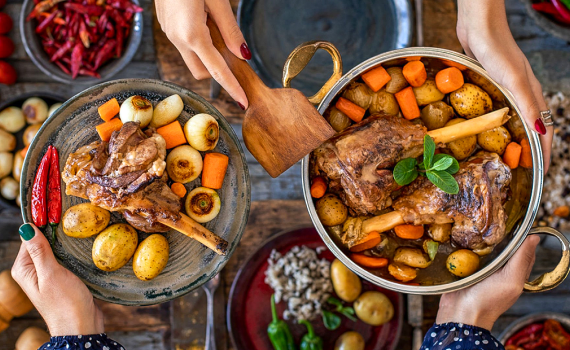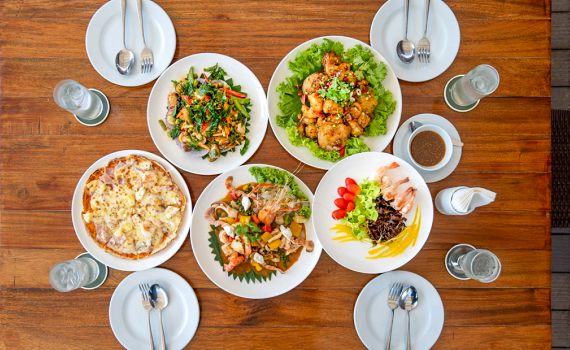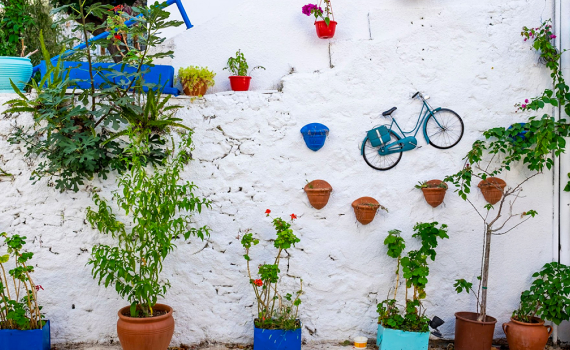Traditional Turkish dishes are among the most exquisite reflections of a cultural heritage that spans thousands of years. Shaped through centuries of interaction with diverse civilizations from the vast steppes of Central Asia to the fertile lands of Anatolia, Turkish cuisine holds a distinctive place in the world thanks to its variety of ingredients and refined cooking techniques.
Recipes, passed down from the Seljuk and Ottoman kitchens to the present day, carry not only taste but also history and tradition. This is the reason why the most celebrated Turkish dishes are far more than just food; they are cultural treasures with deep meanings. The best Turkish food has been lovingly prepared in both humble homes and grand palaces for centuries, preserved and perfected through generations.
The Defining Features of Turkish Cuisine

A rich cultural heritage and the influences of diverse geographical regions shape Turkish cuisine. It offers a remarkable variety and depth. One of its most distinctive qualities is the harmonious presence of both meat-based and vegetarian dishes on the table. Among Turkish meat dishes, kebabs, slow-roasted lamb (kuzu tandır), stews, and clay-pot casseroles hold pride of place. For those seeking lighter dishes, on the other hand, olive oil–based grape leaf rolls, vegetarian versions of karnıyarık, vegetable pilafs (rice), and lentil patties offer delicious and wholesome options.
The diversity of Turkish dishes owes much to the unique climate, agricultural products, and cultural heritage of each region. In Eastern Anatolia, meat dishes are often rich with aromatic spices; in the Aegean, vegetable-based dishes prepared with olive oil are the most common. Central Anatolia is famed for its grains and pastries, the Southeast for its kebabs and mezes, while the Black Sea region showcases corn, anchovies (hamsi), and other local specialties. The variety of dishes ensures that Turkish cuisine offers something to delight every palate.
From preparation to presentation, Turkish dishes are crafted with great care. Freshness of ingredients is exceptional, with seasonal vegetables, locally sourced meats, and natural spices lying at the very core. Traditional cooking techniques such as slow roasting in a tandır, baking in stone ovens, steaming, or simmering in earthenware pots, not only enhance the aroma of the dishes but also bring out a depth of flavor that is both healthy and satisfying.
Key Ingredients in Turkish Cuisine
The very famous dishes of Turkish cuisine are brought to life with nature’s freshest and most abundant offerings. In meat-based recipes, beef, lamb, and chicken are staples, while vegetarian Turkish dishes stand out with an abundance of vegetables, offering wholesome and flavorful alternatives. Grains such as wheat, rice, and bulgur, along with legumes like chickpeas and lentils, grow in the fertile plains of Anatolia, which are one of the key ingredients in both soups and main courses.
Dairy products such as yogurt, ayran (a yogurt drink), butter, and olive oil are indispensable in the Turkish culinary tradition. Spices, on the other hand, give each dish its soul and character. Cumin, sumac, mint, red pepper flakes, thyme, and cinnamon are among the most beloved seasonings. The spices create the satisfying yet balanced flavors that define Turkish cuisine.
A Glimpse into Regional Delights: Aegean, Eastern Anatolia, and Central Anatolia

One of the most captivating aspects of Turkish cuisine is its richness of regional flavors, each shaped by local ingredients, climate, and culinary heritage. Every region has its own unique place among popular Turkish dishes.
The Aegean region is known for its light and healthy recipes, where olive oil reigns and finds its way into nearly every dish. Delicacies such as stuffed zucchini blossoms, artichokes, cowpea salad, fava (broad bean purée), wild chicory, and samphire offer fresh and nourishing options. Seafood also holds a place on tables in the Aegean region.
Eastern Anatolia, by contrast, is celebrated for its bold, hearty flavors, with generous use of spices and a deep tendency toward meat. The region boasts a rich meze(appetizers) culture, where dishes such as acılı ezme, muhammara, and smoky eggplant salad round out the feast. It is one of Turkey’s richest regions for meat dishes, with cooking methods such as slow-roasting in a tandır, grilling over embers, and long, gentle simmering, defining distinct aromas and depth of flavor. Central Anatolia is defined by its devotion to grains and pastries.
Wheat, bulgur, and flour are the key ingredients of many beloved recipes. Famous dishes include Kayseri mantısı (tiny meat-filled dumplings), etli ekmek (thin bread topped with minced meat), arabaşı soup, bulgur pilaf, and gözleme (stuffed flatbread) are among the most popular Turkish dishes. Meat is also common, with lamb and beef prepared using a variety of traditional methods. These three regions are appealing to different palates while contributing to the rich tapestry of Turkish food culture.















